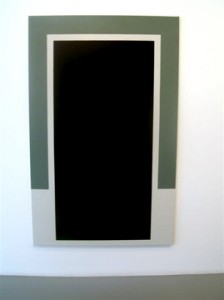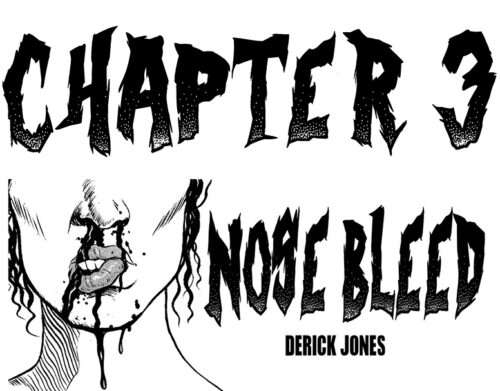It is probably because I am in the market for a flat that I was drawn through the glass door to the Gallery Jean Fournier in the Rue de Bac in Paris (France). The show on view is entitled “Emmenagement” or “Moving House”. This is a show dedicated to those who liked where they lived. We are treated to household objects derived not by design or function but from the process of moving.
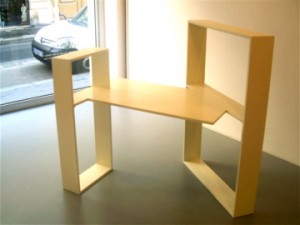
Through the window a combination desk/bookcase by Nathalie Elemento beckons. It is functional but it is an object that seeks to be the architect of its space. Your home will have to fit it and not vise versa. This will be a problem.
In an ode to Claus Oldenberg we cross the room to turn off the lights with a very large, but not giant, lightswitch. Though not thoughtfully installed it never the less shifts the scale of the space without denaturing it.
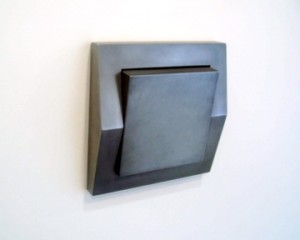
It is not a will to subvert the useful that is transforming the furniture. Rather we see furniture succumbing to our sadness at leaving as well as determining the shape of the new home. This is epitomized by “Entre” or “Between”. We have a chair but nowhere to sit. The practice of sitting between two chairs (le cul entre deux chaises) is not tolerated here either. We have to find another place to put the chair back down . . . unless we wish to wander the world in a moving van which we never unpack?
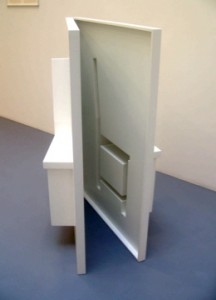
Moving home is a painful. Money may be gained but many intangibles are lost. Their is a physical loss as well; the familiar creaking of floors, light and shadows at certain times of day and the configuration of walls that you used to navigate through. Peter Soriano’s sculpture “”Other Side #23” is, among other things, a culmination of the desire to take the house with us.
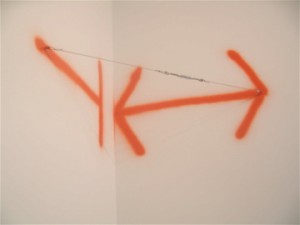
The number of elements put into play here thrills me. With a deft “pschtt” of spray paint a few grams of pigment have taken posession of the mass of the walls. The cable strung between the arrow head and the tip of a “T” square compresses these mechanical/architectural drawing symbolizing dimensions without deforming them. I hear Figaro singing out the dimensions of his new bridal bedroom. The painted symbols become load bearing. The wire pushes and pulls. Its line continues beyond itself while encouraging us to close the walls like a book or a suitcase and take them and their contents with us. It also seems to keep a corner of our disappearing world intact. Of course, the triangle/ arrowhead created by the two walls and the cable suggest a teepee as an alternative solution. This piece is indelible for me and I see it in every corner I look into now.
Fragmentation is what Pierre Buraglio proposes with the lower left hand corner of a poorly maintained window. The caulking could be new: was the window recently replaced? The green pane seems like a kind of graph. Perhaps with each new abode our view through the window is tinted. Or perhaps the house is under water? This piece is achingly sad but the right angle at its base promises stability and structure if we can get the curves of the graph right . . .
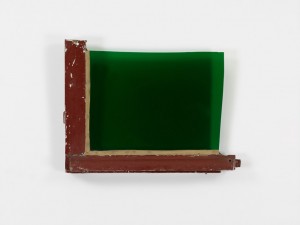
Finally, the architectural detail common to all coming and going is the door. Emmanual Van der Meulen’s painting “Untitled” proposes a painted one with a floating architrave that the door seems to wear on its shoulders. It is not a door but simply door. The black entrance(way) is strangely riveting. Although on the other side one would half expect to meet with a scewed and lumpy funny house floor that would send us sprawling, we fully gather the experience of passing through yet another doorway, from one garden to another, in our search for Paradise on earth.
